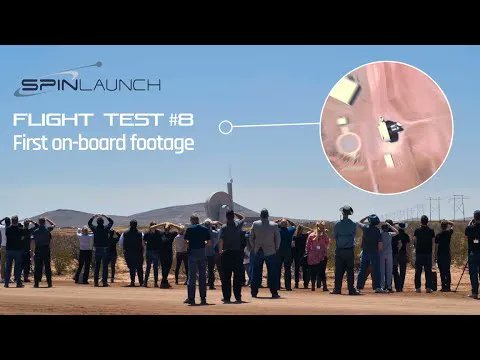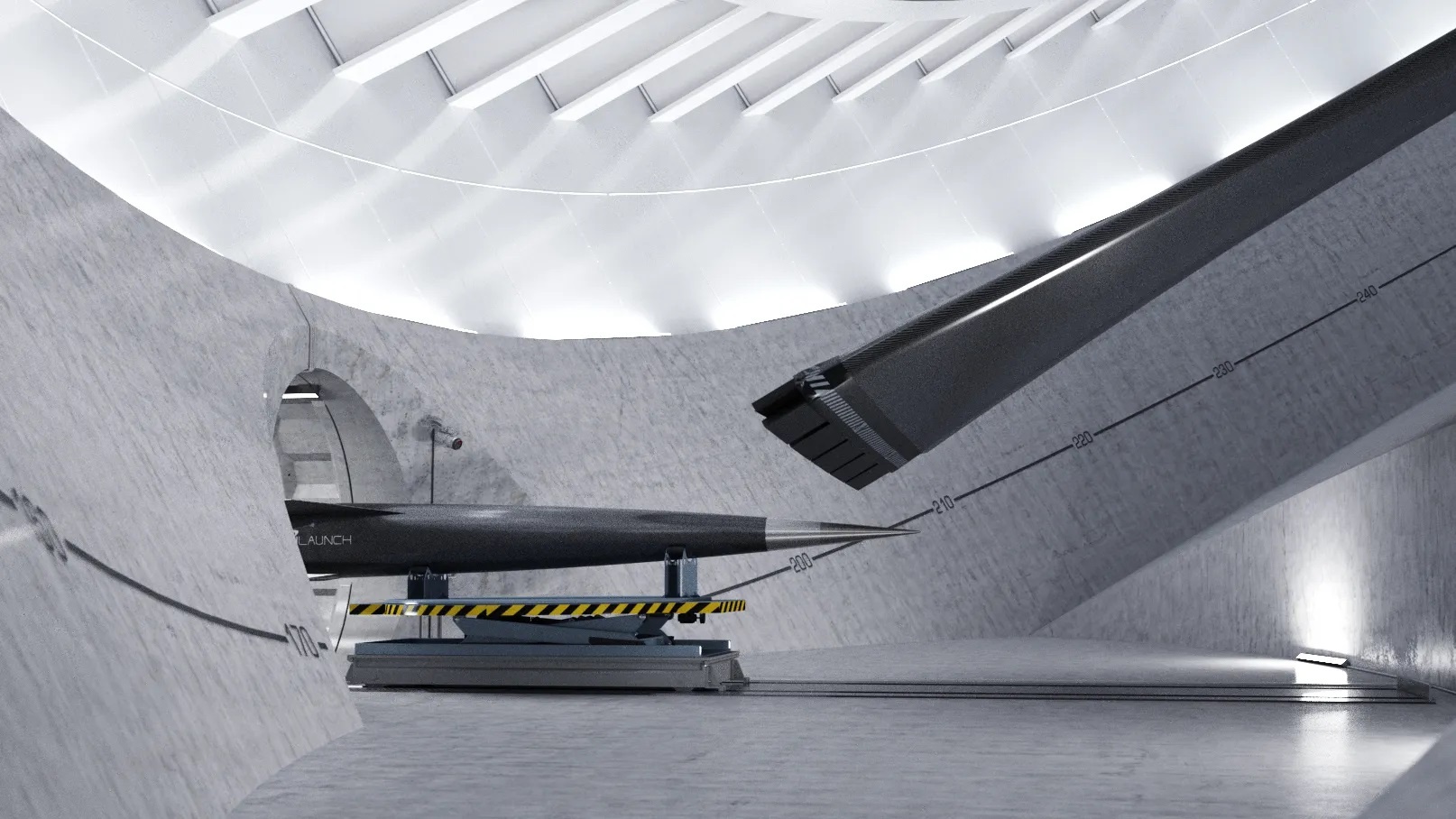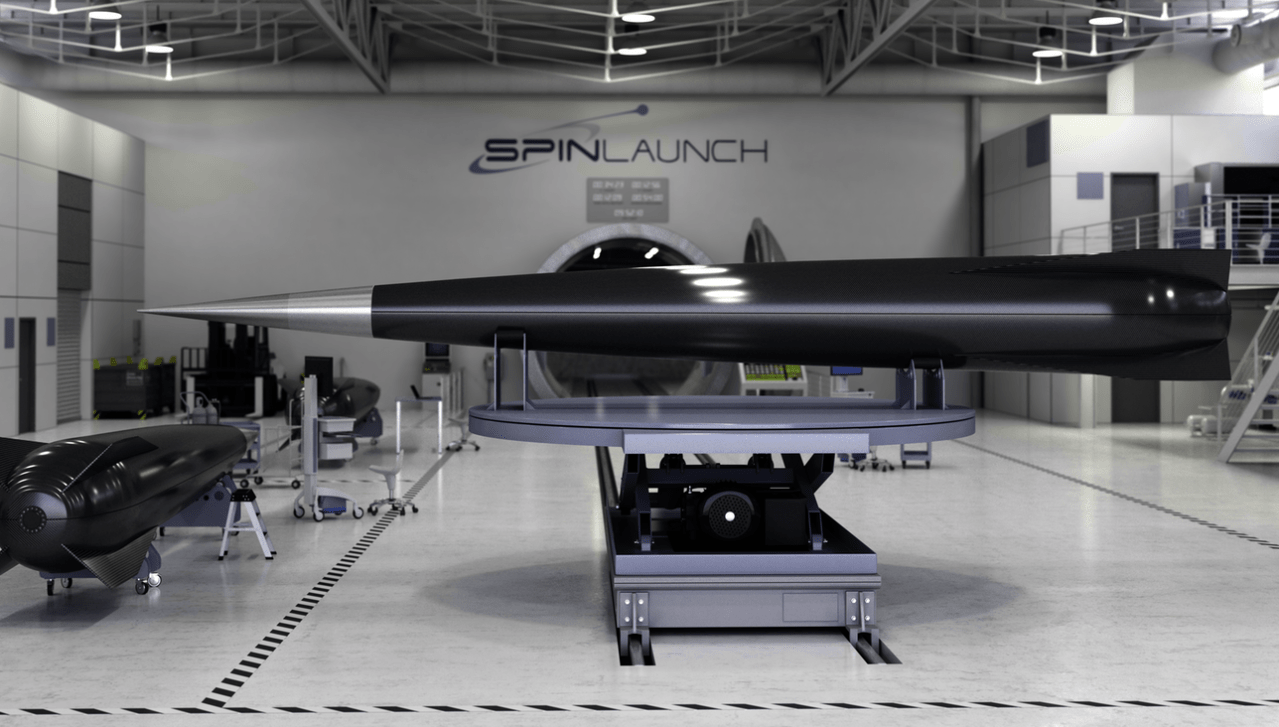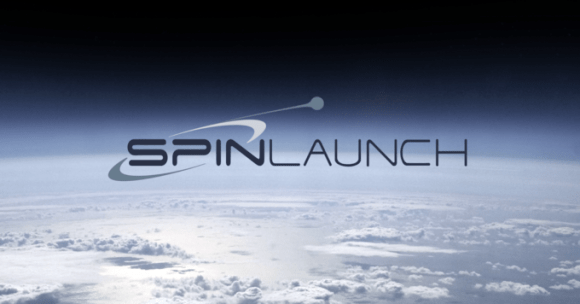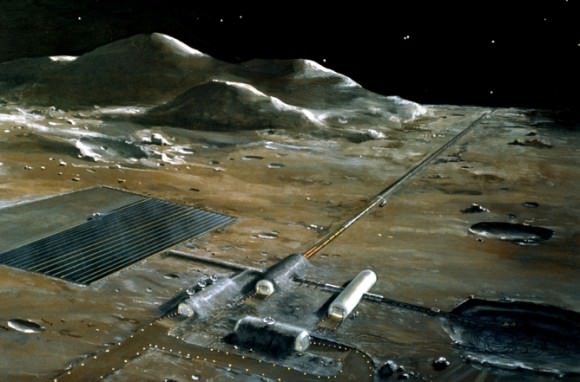Can watching a video give you motion sickness? If so, a commercial launch company called SpinLaunch just released a video that is sure to. The video is from the first camera ever attached to one of the company’s test payloads, and boy is it spectacular, though it might indeed be nausea-inducing in some people.
Continue reading “Spinlaunch Hurled a Test Rocket Into the air. See What it Looked Like From the Payload’s Point of View”SpinLaunch Hurls a Test Vehicle Kilometers Into the air. Eventually, it’ll Throw Them Almost all the way to Orbit
For today’s commercial space companies providing launch services to orbit, the name of the game is simple: “do it cheaper.” To reduce the costs of launching payloads to space and encourage the commercialization of Low Earth Orbit (LEO), entrepreneurs have turned to everything from reusable rockets and 3-D printing to air-launch vehicles and high-altitude balloons. And yet, there is one concept that truly seems like something out of this world!
This concept is known as a mass accelerator, a kinetic energy space launch system that is an alternative to chemical rockets. In recent news, the commercial space company SpinLaunch conducted the first launch test of its Suborbital Accelerator for the first time. The success of this vertical test is a crucial stepping stone towards the creation of the company’s proposed Orbital Launch System (OLS), which will conduct regular payload launches soon.
Continue reading “SpinLaunch Hurls a Test Vehicle Kilometers Into the air. Eventually, it’ll Throw Them Almost all the way to Orbit”Space Catapult Startup SpinLaunch has Come Out of Stealth Mode. Space catapults? Yes Please
Of all challenges presented by space exploration – and to be fair, there are many! – one of the greatest is the cost. When it comes right down to it, launching disposable rockets from Earth and getting them to the point where they can achieve escape velocity and reach space is expensive. In addition, these rockets need to be big, powerful and hold a lot of fuel to lift spacecraft or cargo.
For this reason, so many efforts in the past few decades have been focused on reducing the cost of individual launches. There are many ways to make launch vehicles cheaper, ranging from reusable rockets to reusable spacecraft (i.e., the Space Shuttle). But to Jonathan Yaney, the founder of SpinLaunch, a real cost-cutting solution is to propel smaller payloads into orbit using a space catapult instead.
The concept of a space catapult is simple and has been explored at length since the dawn of the Space Age. Also known as a mass driver or coilgun, the concept relies on a set of powerful electromagnetic rails to accelerate spacecraft or payloads to escape velocity and launch them horizontally. Since the 1960s, NASA has been exploring the concept as an alternative to conducting rocket launches.
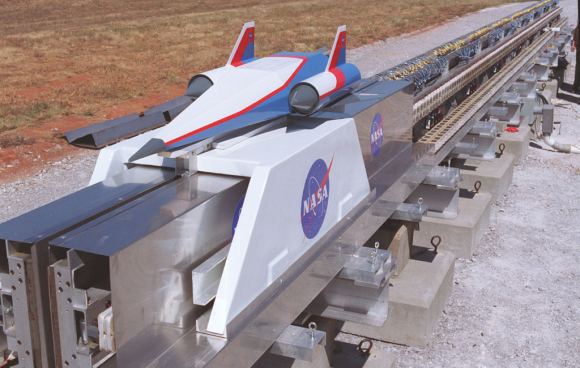
In addition, NASA has continued developing this technology through the Marshall Space Flight Center and the Kennedy Space Center. Here, engineers have been working on ways to launch spacecraft horizontally using scramjets on an electrified track or gas-powered sled. A good example of this is the Magnetic Levitation (MagLev) System which uses the same technology as a maglev train to accelerate a small space plane into orbit.
Another variation on the concept involves a centrifuge, where the spacecraft or cargo is accelerated on a circular track until it reaches escape velocity (and then launches). This concept was proposed by Dr. Derek Tidman – a physicist who specialized in electrothermal and electromagnetic acceleration – in the 1990s. Known as the Slingatron, this version of the space catapult is currently being researched by HyperV Technologies.
However, these ideas were never adopted because vast improvements in electromagnetic induction technology were needed to achieve the speed necessary to put heavy payloads into space. But thanks to advancements in high-speed maglev trains, recent attempts to create Hyperloop pods and tracks, and the growth of the commercial aerospace market, the time may be ripe to revisit this concept.
Such is the hope of Jonathan Yaney, an aerospace enthusiast with a long history of co-founding startups. As he describes himself, Yaney is a “serial entrepreneur” who has spent the past 15 years founding companies in the fields of consulting, IT, construction, and aerospace. Now, he has established SpinLaunch for the sake of launching satellites into space.
And while Yaney has been known for being rather recluse, TechCrunch recently secured an exclusive interview and gained access to the company hangar. According to multiple sources they cite, Yaney and the company he founded are launching a crowdfunding campaign to raise the $30 million in Series A funding to develop the catapult technology. In the course of the interview, Yaney expressed his vision for space exploration as follows:
“Since the dawn of space exploration, rockets have been the only way to access space. Yet in 70 years, the technology has only made small incremental advances. To truly commercialize and industrialize space, we need 10x tech improvement.”
According to a source cited by TechCrunch, SpinLaunch’s design would involve a centrifuge that accelerates payloads to speeds of up to 4,828 km/h (3,000 mph). Additionally, the cargo could be equipped with supplemental rockets to escape Earth’s atmosphere. By replacing rocket boosters with a kinetic launch system, SpinLaunch’s concept would rely on principles similar to those explored by NASA.
But as he went on to explain, the method his company is exploring is different. “SpinLaunch employs a rotational acceleration method, harnessing angular momentum to gradually accelerate the vehicle to hypersonic speeds,” he said. “This approach employs a dramatically lower cost architecture with much lower power.” Utilizing this technology, Yaney estimates that the costs of individual launches could be reduced to $500,000 – essentially, by a factor of 10 to 200.
According to Bloomberg Financial, not much more is known about the company or its founder beyond a brief description. However, according to SEC documents cited by TechCrunch, Yaney managed to raise $1 million in equity in 2014 and $2.9 million in 2015. The same documents indicate that he was $2.2 million in debt by mid-2017 and another $2 million in debt by late 2017.
Luckily, the Hawaii state senate introduced a bill last month that proposed issuing $25 million in bonds to assist SpinLaunch with constructing its space catapult. Hawaii also hopes to gain construction contracts for the launch system as part of its commitment to making space accessible. As it states in the bill:
“[T]he department of budget and finance, with the approval of the governor, is authorized to issue special purpose revenue bonds in a total amount not to exceed $25,000,000, in one or more series, for the purpose of assisting SpinLaunch Inc., a Delaware corporation, in financing the costs relating to the planning, design, construction, equipping, acquisition of land, including easements or other interests therein, and other tangible assets for an electrically powered, kinetic launch system to transport small satellites into low Earth orbit.”
In the meantime, Yaney is looking to the public and several big venture capital firms to raise the revenue he needs to make his vision a reality. Of course, beyond the issue of financing, several technical barriers still need to be addressed before a space catapult could be realized. The most obvious of these is how to overcome the air resistance produced by Earth’s dense atmosphere.
However, Yaney was optimistic in his interview with TechCrunch, claiming that his company is investigating these and other challenges:
“During the last three years, the core technology has been developed, prototyped, tested and most of the tech risk retired. The remaining challenges are in the construction and associated areas that all very large hardware development and construction projects face.”
There’s no indication of when such a system might be complete, but that’s to be expected at this point. However, with the support of the Hawaiian government and some additional capital, his company is likely to secure its Series A funding and begin moving to the next phase of development. Much like the Hyperloop, this concept may prove to be one of those ideas that keep advancing because of the people who are willing to make it happen!
And be sure to check out this video about SpinLaunch’s crowdfunding campaign, courtesy of Scott Manley:
Further Reading: TechCrunch

